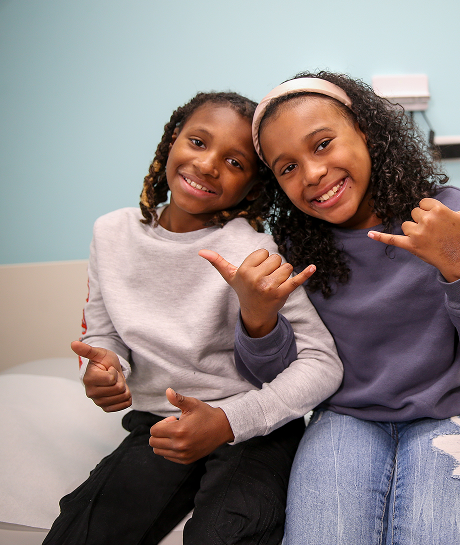congenital gastrointestinal surgery program

congenital gastrointestinal surgery program
Dayton Children’s congenital gastrointestinal surgery program combines the expertise of pediatric surgeons and pediatric gastroenterologists to provide a seamless continuum of care for babies born with complex gastrointestinal issues.
Anorectal malformation is a condition that occurs when the rectum of the baby does not come all the way through the tissue of the bottom leaving an opening that is too small, or no opening at all for the stool to be passed from the body. Learn more
Biliary atresia is a condition that affects the liver and bile ducts. Biliary atresia is a rare disease that occurs in about one in 12,000 infants in the U.S. Symptoms usually start between two to eight weeks after birth. Learn more
The esophagus us the muscular tube that allows food and liquid to pass from the mouth to the stomach. In esophageal atresia (EA), the esophagus does not form normally; instead, the upper part ends blindly in the lower neck or upper chest and is therefore blocked. Most of the time EA is associated with a tracheoesophageal fistula, a condition where the lower part of the esophagus has an abnormal connection to the trachea or windpipe, allowing stomach acid to enter the lungs. Learn more
Gastroschisis results when the muscle and skin do not close completely over the abdomen, and the abdominal organs are outside the abdomen at birth. Learn more
In Hirschsprung disease, the nerves controlling movement of the intestine do not develop properly. The specific nerves of intestinal movement are called “ganglion cells.” In Hirschsprung disease, there are no ganglion cells in the wall of the affected intestine or colon, which results in that portion not moving things through. Learn more
An omphalocele is an opening in the middle of the belly where the muscle and skin is not present. Instead, the organs are covered by a thin transparent sac. The umbilical cord is located in the center of the sac. Learn more
here when you need us
Whether you’re looking for the right provider, ready to make an appointment, or need care right now—we’re here to help you take the next step with confidence.
